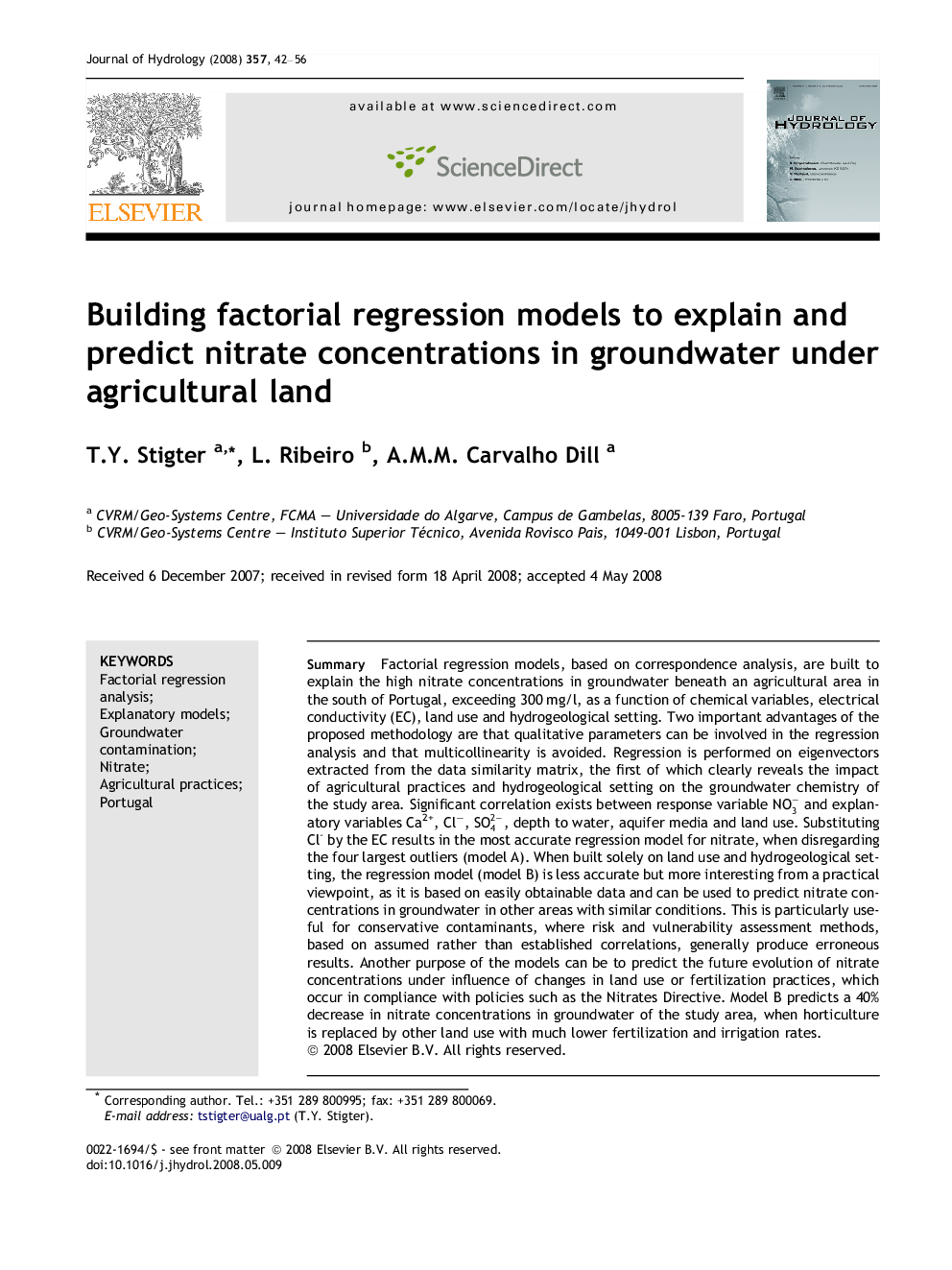| کد مقاله | کد نشریه | سال انتشار | مقاله انگلیسی | نسخه تمام متن |
|---|---|---|---|---|
| 4579358 | 1630104 | 2008 | 15 صفحه PDF | دانلود رایگان |

SummaryFactorial regression models, based on correspondence analysis, are built to explain the high nitrate concentrations in groundwater beneath an agricultural area in the south of Portugal, exceeding 300 mg/l, as a function of chemical variables, electrical conductivity (EC), land use and hydrogeological setting. Two important advantages of the proposed methodology are that qualitative parameters can be involved in the regression analysis and that multicollinearity is avoided. Regression is performed on eigenvectors extracted from the data similarity matrix, the first of which clearly reveals the impact of agricultural practices and hydrogeological setting on the groundwater chemistry of the study area. Significant correlation exists between response variable NO3- and explanatory variables Ca2+, Cl−, SO42-, depth to water, aquifer media and land use. Substituting Cl- by the EC results in the most accurate regression model for nitrate, when disregarding the four largest outliers (model A). When built solely on land use and hydrogeological setting, the regression model (model B) is less accurate but more interesting from a practical viewpoint, as it is based on easily obtainable data and can be used to predict nitrate concentrations in groundwater in other areas with similar conditions. This is particularly useful for conservative contaminants, where risk and vulnerability assessment methods, based on assumed rather than established correlations, generally produce erroneous results. Another purpose of the models can be to predict the future evolution of nitrate concentrations under influence of changes in land use or fertilization practices, which occur in compliance with policies such as the Nitrates Directive. Model B predicts a 40% decrease in nitrate concentrations in groundwater of the study area, when horticulture is replaced by other land use with much lower fertilization and irrigation rates.
Journal: Journal of Hydrology - Volume 357, Issues 1–2, 30 July 2008, Pages 42–56